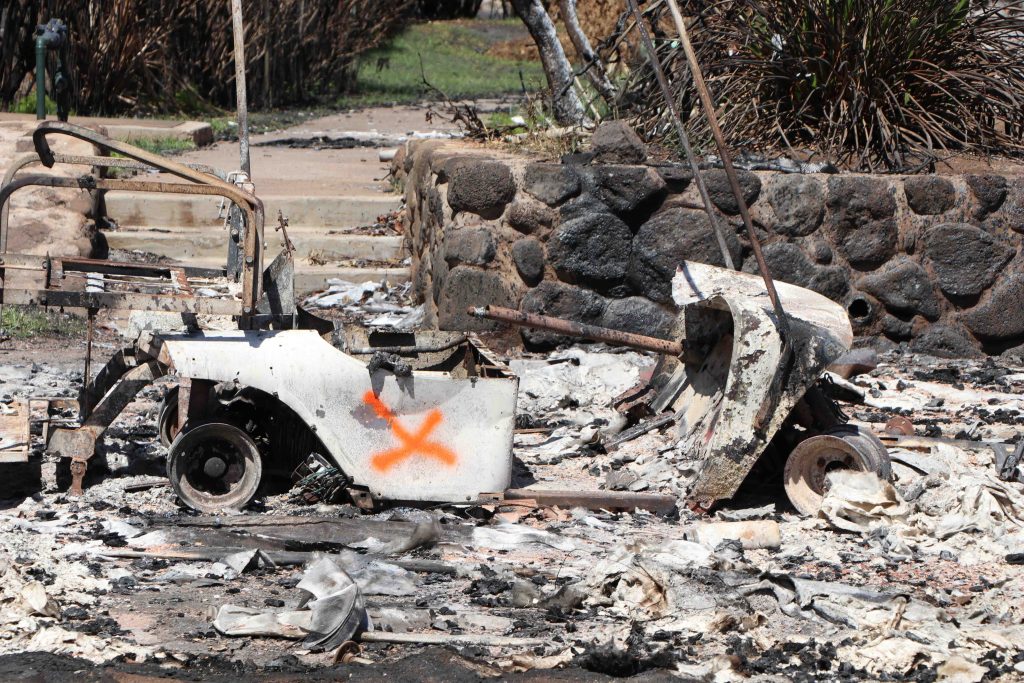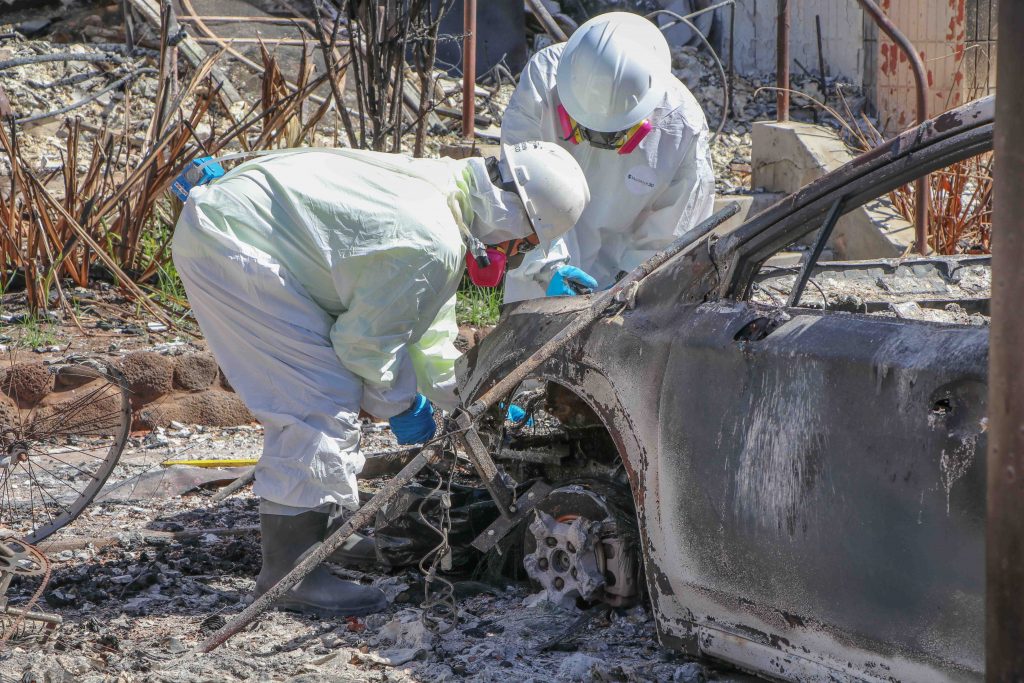EPA workers finding many batteries during hazardous material cleanup of Lahaina burned area

The US Environmental Protection Agency has been working since Aug. 29 to remove hazardous material, including large pieces of asbestos, from the 5-square-mile burned area from the Lahaina fire.
“We were fortunate that we were able to go to Kula and do some of the [19] properties there —take the time to figure out how to do it right, learn our operational plans, train our teams,” said Doug Ferguson, the federal on-scene coordinator with the EPA, in a video. “So that when we expand to Lahaina, where there’s obviously far more properties, the training that we did in the Kula area has paid off.”
More than 2,200 homes, businesses, multi-unit dwellings and structures were destroyed in Lahaina.
About 150 people, with 30% local hires who the EPA trained in hazmat tech certifications, have been involved in this operation so far.
“The idea is to involve different expertise, like people that are good with tracking,” Ferguson said. “We have the tools used to monitor for different potential hazardous vapors, radiation and we screen the property for that. And anything we find that is hazardous in terms of household hazardous waste, we can pull out of the pile and make sure that it gets properly packaged and disposed of.”
He said the most prevalent potentially hazardous items they are finding are propane cylinders, but the vast majority no longer have propane in them due to the fire.
Crews also are finding a lot of batteries in golf carts and vehicles. They also are finding many lithium batteries and power walls that are battery storage systems.
Workers put a red X on something that’s an electrical hazard, like the power walls. Orange is for everything else that might be a hazard, including damaged trees that might not be stable, and pink is for suspected asbestos materials.
White is for evaluated items that have been determined to not be hazardous.
“We always have spotters who are watching the crews to make sure there’s not some hazard that they might have missed,” Ferguson said.
During this hazardous removal phase, permission is not needed from property owners because the work is done under state emergency orders. But officials emphasized that EPA workers are removing only hazardous material. No personal items will be removed.
Also during this process, embedded local monitors help the crews identify anything that is cultural.
To keep crews fresh, the EPA has reached out to other regions for backup.
This hazardous removal phase of the debris cleanup of the fire is expected to last months.
Once the hazardous materials are removed, and safety assessments are done on the structural integrity of buildings that are still standing, people and business owners will be allowed to return to their properties.
The EPA said in a news release it will stop work immediately and contact the Maui Police Department if functional firearms or suspected remains are found.
After household hazardous material is removed, EPA may mist a fine, non-toxic, marine-safe and biodegradable adhesive called “Soiltac” on ash on some properties.
This would be done to prevent ash from blowing into the ocean to do further damage to the environment. The State of Hawaiʻi and Maui County approved the use of this adhesive, which dries clear.
While working to remove household hazardous material, EPA also will monitor the air for fine particles of dust called “particulate matter.” The air monitors will be listed on EPA’s Air Now website.


























